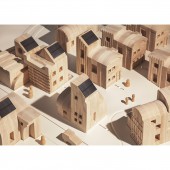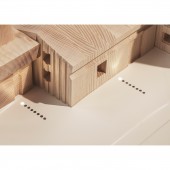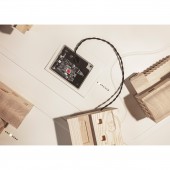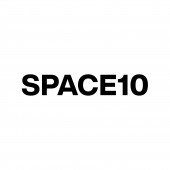SolarVille Sustainable Energy Community by SPACE10 |
Home > Winners > #92742 |
 |
|
||||
| DESIGN DETAILS | |||||
| DESIGN NAME: SolarVille PRIMARY FUNCTION: Sustainable Energy Community INSPIRATION: Today, around 1.1 billion people around the world still have little or no access to electricity. The challenge is that the centralised energy systems we have in place are often too slow and economically inadequate to reach the billion people who remain locked in energy poverty.Solarville presents a solution to this global problem. Alongside empowering people with electricity, the community buys its electricity from within, which means the money stays in the community. UNIQUE PROPERTIES / PROJECT DESCRIPTION: Solarville showcases how combining solar panels with blockchain technology could make clean energy more affordable and accessible for the many. SolarVille is a fully functioning prototype, built to a 1:50 scale: some households have installed solar panels to become makers and traders of clean energy, while others automatically purchase the electricity generated in their local community. As a result, SolarVille is a cooperative micro-grid that makes a community self-sufficient. OPERATION / FLOW / INTERACTION: Solarville reimagines energy systems in the pursuit of democratising access to clean energy and empowering hyper-localized economies in order to meet this steep demand. To do this, Solarville utilises two key developments: combining solar power with blockchain technology to create cooperative micro-grids in local communities, which is both tamper free, secure against hacking and protected against central governance. PROJECT DURATION AND LOCATION: Project began in September 2018 and launched February 2019. Solarville is now going on tour and will be shown first in Nairobi at the UN Habitat, and then will move on to locations such as Delhi and Shenzhen. FITS BEST INTO CATEGORY: Social Design |
PRODUCTION / REALIZATION TECHNOLOGY: Solarville is made thorugh outfitting houses within a community with rooftop solar panels and inverters that harness the energy of the sun and store it within batteries systems found under the home. This energy can then be redistributed through a wiring system connected to other households, creating a standalone micro-grid. Blockchain distributed ledger technology is then used to log and manage the energy flow—verifying and recording transactions, and self-executing when certain conditions are met. SPECIFICATIONS / TECHNICAL PROPERTIES: Pallet #1 W80cm x L130cm x H200cm Pallet #2 W80cm x L130cm x H170cm Otherwise table on its own has a footprint of 300cm x 150cm TAGS: - RESEARCH ABSTRACT: Alongside the project, we’ve also released a report called ‘A Brighter Tomorrow’, which lends more insights into the research behind SolarVille. More importantly, it makes the case for solar power becoming the viable, sustainable source of energy we need to turn to if we want to mitigate the effects of climate change. CHALLENGE: An important design decision was to develop an inclusive architectural language that combined building details and city structures from different cultures and countries—so SolarVille didn’t speak to one part of the world while alienating others. We compiled a comparative study with well known and celebrated city structures from around the world, building a small archive of unique building details that spoke to cultural contexts on a global scale. ADDED DATE: 2019-09-29 14:55:17 TEAM MEMBERS (8) : , SPACE10, Blockchain Labs for Open Collaboration (BLOC), WeMoveIdeas India, Blocktech, Temporal, SachsNottveit and IMAGE CREDITS: SPACE10, 2019. |
||||
| Visit the following page to learn more: https://space10.com/project/solarville/ | |||||
| AWARD DETAILS | |
 |
Solarville Sustainable Energy Community by Space10 is Winner in Energy Products, Projects and Devices Design Category, 2019 - 2020.· Read the interview with designer SPACE10 for design SolarVille here.· Press Members: Login or Register to request an exclusive interview with SPACE10. · Click here to register inorder to view the profile and other works by SPACE10. |
| SOCIAL |
| + Add to Likes / Favorites | Send to My Email | Comment | Testimonials | View Press-Release | Press Kit |
Did you like Space10's Energy Design?
You will most likely enjoy other award winning energy design as well.
Click here to view more Award Winning Energy Design.








